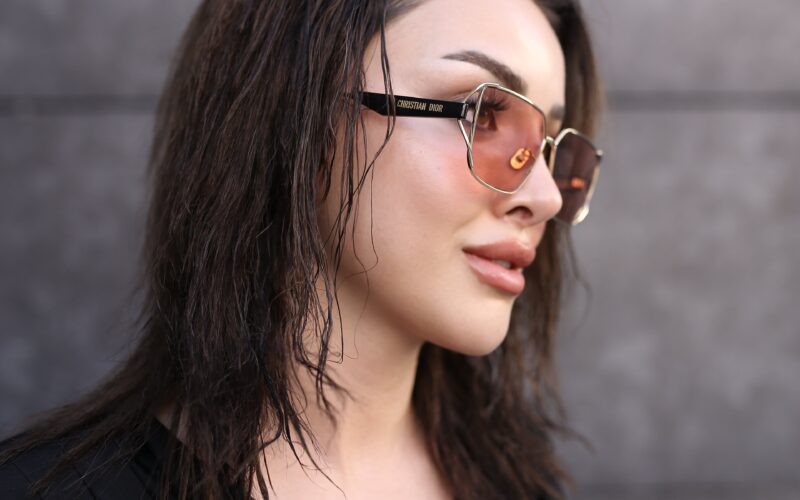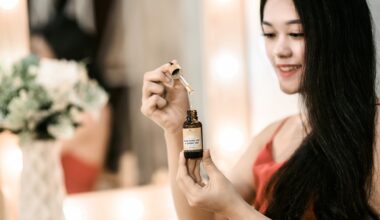Introduction
In the tapestry of hair care rituals passed down through generations, the art of hair oiling stands out as a timeless tradition. From ancient civilizations to our grandmothers’ trusted routines, hair oil has been revered as a liquid gold for tresses. Yet, in our fast-paced modern world, we often grapple with questions about its correct usage. How often should we oil our hair? How much is too much? Dive in with me, as we demystify the nuances of hair oiling and embark on a two-week journey to achieve radiant locks.
Key Takeaways
- Tailored Choices: Your hair is unique, and so should be your oil. Understanding and selecting the right oil for your hair type can be a game-changer.
- Moderation Matters: While hair oil can work wonders, it’s crucial to find the right balance. Overdoing it or using too little can sway the results.
- Art of Application: It’s not just about what you apply but how you do it. Perfecting your oiling technique can amplify the benefits manifold.
- Be Observant: Your hair speaks to you. Recognizing the signs of over-oiling or under-oiling can help you adjust and refine your routine.
The Essence of Hair Oil
Hair oiling isn’t merely a ritual; it’s a testament to the power of nature. Before the maze of contemporary hair products, there was the simplicity and efficacy of hair oils.
Historical Significance of Hair Oiling
From the olive oil-infused hair care routines of ancient Greeks to the coconut oil massages prevalent in tropical regions, hair oiling has transcended cultures and eras. It was not just about beauty but also well-being. For many, the act of massaging oil into the scalp and hair was therapeutic, a moment of self-care.
Benefits Galore
The richness of hair oil is not just skin (or scalp) deep. Its benefits are multifaceted:
- Nourishment: Hair oils are packed with essential fatty acids, vitamins, and antioxidants. These nutrients penetrate the hair shaft, rejuvenating each strand from within.
- Natural Sheen: Ever wondered how our ancestors flaunted shiny locks without serums? The answer lies in the natural gloss provided by oils.
- Strength: Regular oiling fortifies the hair, making it resilient to breakage and environmental damage.
- Promotes Growth: Many oils, when massaged into the scalp, stimulate blood circulation. This enhanced blood flow can invigorate hair follicles, promoting healthier and faster hair growth.
In essence, hair oil is more than a beauty product; it’s nature’s gift to our hair, a blend of care, nourishment, and love.
Choosing the Right Hair Oil for You
Every strand on your head is unique, telling tales of your genes, environment, and even your daily habits. This individuality demands a hair oil that complements it.
Popular Hair Oils and Their Unique Benefits
- Coconut Oil: A favorite for many, coconut oil is lauded for its deep moisturizing properties. Rich in lauric acid, it binds to hair proteins, preventing breakage and split ends. It’s ideal for dry, thirsty hair.
- Almond Oil: Packed with vitamin E, almond oil offers antioxidative properties, safeguarding your hair from environmental aggressors like pollution. Its lightweight nature makes it perfect for those seeking nourishment without heaviness.
- Argan Oil: Often dubbed ‘liquid gold,’ argan oil, derived from the Moroccan argan tree, is a powerhouse of fatty acids and antioxidants. It not only moisturizes but also imparts a natural shine, making it a go-to for frizzy, unmanageable hair.
- Jojoba Oil: Mirroring the natural sebum of our scalp, jojoba oil balances oil production. It’s a boon for those with oily scalps, ensuring hydration without exacerbating oiliness.
Customizing Oil Blends for Specific Needs
While single oils are potent, sometimes our hair craves a concoction. Mixing oils can cater to multiple hair needs simultaneously. For instance:
- For Intense Moisture: A blend of coconut oil and shea butter can deeply hydrate parched strands.
- For Shine and Strength: Mixing argan oil with a few drops of almond oil can create a blend that not only shines but also fortifies.
- For Scalp Health: A mix of tea tree oil with jojoba can soothe and cleanse the scalp, warding off issues like dandruff.
Remember, the key lies in experimentation. Listen to your hair, understand its needs, and don’t hesitate to mix and match until you find your perfect blend.
Getting the Quantity Just Right
The adage “too much of a good thing can be bad” holds especially true for hair oiling. It’s a balance – enough to nourish but not so much that it weighs down or creates a greasy mess.
Why the Right Quantity is Crucial
Finding the sweet spot in quantity ensures that your hair absorbs the essential nutrients without getting overloaded. Over-oiling can lead to issues like clogged hair follicles, while under-oiling might not provide the desired benefits.
Guidelines for Different Hair Lengths and Types
While there’s no one-size-fits-all, here are some general guidelines:
- Short Hair: A teaspoon or so is usually sufficient. Remember, it’s easier to add more oil if needed than to deal with an excess.
- Medium-Length Hair: Starting with a tablespoon can be a good benchmark. Adjust based on your hair’s absorption.
- Long Hair: Depending on thickness and dryness, anywhere from 1 to 3 tablespoons can be apt.
- Curly or Coarse Hair: These hair types often crave more moisture. Don’t hesitate to be a bit more generous, but always assess how your hair feels post-application.
- Fine Hair: Caution is key. Start with a smaller quantity to prevent the hair from becoming limp.
Signs You’re Using Too Much or Too Little
Being observant can guide you to the right quantity:
- Too Much: If your hair feels excessively greasy even after washing, or if you notice more dust and dirt clinging to your hair, you might be overdoing it.
- Too Little: Dry, brittle strands or a lack of noticeable benefits post-oiling can be indicators.
Adjusting and finding the perfect quantity is a journey, one that requires patience and keen observation. But once you nail it, the results are worth the effort.
Mastering the Application Technique
While the right oil and quantity are foundational, the magic often lies in the method. Let’s explore how to make every drop of that oil count.
Pre-wash vs. Post-wash Oiling
There’s often a debate between these two techniques, but both have their merits.
- Pre-wash Oiling: This method involves oiling the hair before shampooing. It acts as a protective layer, shielding the hair from the harshness of shampoos and preventing the stripping of natural oils. Moreover, massaging the oil into the scalp can boost blood circulation, promoting hair health.
- Post-wash Oiling: Applying a few drops of oil to damp hair can lock in moisture, preventing frizz and adding shine. For those with fine hair, this method can offer the benefits of oiling without weighing the hair down.
Scalp Massage: The Secret to Effective Oiling
The act of massaging not only feels therapeutic but also amplifies the benefits of the oil. Gentle circular motions can:
- Stimulate blood flow, nourishing the hair follicles.
- Aid in the even distribution of oil.
- Provide relaxation, reducing hair-harming stress.
Ensuring Even Distribution for Maximum Benefits
To ensure that every strand gets its share of nourishment:
- Divide your hair into sections.
- Apply oil gradually, working it down from the roots to the tips.
- Use a wide-tooth comb post-application. This helps in spreading the oil uniformly and also detangles the hair.
Oiling is as much about the experience as it is about the results. It’s a moment of self-care, a ritual that connects us to generations before us. By refining our techniques, we can make the most of this age-old practice.
Avoiding Common Hair Oil Mistakes
Even with the best intentions, it’s easy to make missteps in our hair oiling journey. By being cognizant of these common mistakes, you can ensure your efforts yield the best results.
The Risks of Over-Oiling
While the nourishment from oils is unparalleled, there’s a fine line between just right and too much.
- Greasiness: Excessive oil can make your hair look perpetually unwashed, taking away from its natural bounce and volume.
- Build-up: Too much oil can lead to build-up, clogging hair follicles. This can inhibit hair growth and even lead to issues like dandruff.
- Attracts Dirt: Over-oiled hair can become a magnet for dust and pollution, leading to more frequent washing and potential hair damage.
The Pitfalls of Under-Oiling
Conversely, not using enough oil can mean missing out on its many benefits.
- Dryness: If your hair continues to feel dry and lifeless even after oiling, you might not be using enough.
- Breakage: Insufficient oil can leave hair vulnerable to breakage, especially when combing or styling.
- Missed Benefits: Under-oiling can mean your hair isn’t reaping the full benefits of the nutrients and protection that oils offer.
Striking a Balance for Radiant Locks
Achieving the perfect balance is an art. Here are some tips:
- Listen to Your Hair: Your hair often communicates its needs. If it feels heavy and greasy, reduce the quantity. If it’s still parched, consider increasing it or changing your oil.
- Experiment: Don’t be afraid to try different oils or blends to find what suits your hair best.
- Consistency is Key: Rather than oiling heavily once in a while, consider regular, moderate oiling sessions. This ensures consistent nourishment without overwhelming your hair.
Hair oiling is a journey, one with its share of trials and errors. But with awareness and adjustments, you can sidestep these common pitfalls and pave the way for lustrous, healthy hair.
The 2-Week Challenge: Your Path to Radiant Hair
Now that we’ve explored the fundamentals of hair oiling, it’s time to put our knowledge into practice. In this section, we’ll outline a two-week challenge designed to help you achieve the lustrous locks you’ve always desired.
Week 1: Resetting and Establishing a Routine
Day 1-3: Choose Your Oil
- Begin by selecting the oil that best suits your hair type and needs.
- Perform a patch test to ensure you don’t have any adverse reactions.
- Prepare your chosen oil blend or use a single oil.
Day 4: Detox Your Scalp
- Use a gentle, clarifying shampoo to remove any product build-up and impurities from your scalp.
- Towel-dry your hair, leaving it slightly damp for oil application.
Day 5-7: Oil Application
- Start with a small quantity of oil.
- Section your hair and apply the oil evenly from roots to tips, focusing on the scalp.
- Massage your scalp in circular motions for 5-10 minutes.
- Leave the oil on for at least 1-2 hours or overnight if possible.
- Wash your hair with a mild, sulfate-free shampoo and condition as usual.
Week 2: Refining the Process and Observing Changes
Day 8-10: Oil Application (Repeat)
- Follow the same oiling routine as in Week 1.
Day 11: Hair Assessment
- Take a moment to assess your hair’s condition. Note any changes in texture, shine, and overall health.
Day 12-14: Final Stretch
- Continue with the oiling routine.
- Observe any further improvements or changes in your hair.
- Consider making adjustments based on your observations.
Tips for Maintaining the Results Beyond Two Weeks
- After the initial two weeks, you can reduce the frequency of oiling to once or twice a week, depending on your hair’s needs.
- Continue to choose the right oil and quantity based on your hair’s response.
- Regularly trim your hair to remove split ends and maintain healthy growth.
- Stay hydrated and maintain a balanced diet rich in vitamins and minerals essential for hair health.
By the end of this two-week challenge, you should notice significant improvements in your hair’s texture, shine, and overall health. Remember, consistency and patience are key to achieving and maintaining radiant locks.
Conclusion
In this journey through the world of hair oiling, we’ve unraveled the age-old secret to achieving radiant locks. From the historical significance of hair oiling to the art of choosing the right oil and mastering the application technique, we’ve covered it all.
But this knowledge isn’t just about facts; it’s about transformation. It’s about embracing a ritual that transcends generations, connecting us to the beauty secrets of our ancestors. It’s about understanding that less can indeed be more and that the true magic lies in the method.
As you embark on your 2-week challenge, remember that it’s not just about oiling your hair; it’s about nourishing your roots, both literally and figuratively. It’s about self-care and self-discovery. So, go ahead, choose your oil, find your quantity, and savor every moment of the journey. Listen to your hair, watch it transform, and in doing so, you’ll connect with a tradition that celebrates not just beauty but also well-being.
And as you continue this practice beyond these two weeks, may your locks radiate the stories of generations, the wisdom of nature, and the care you’ve lovingly bestowed upon them.





